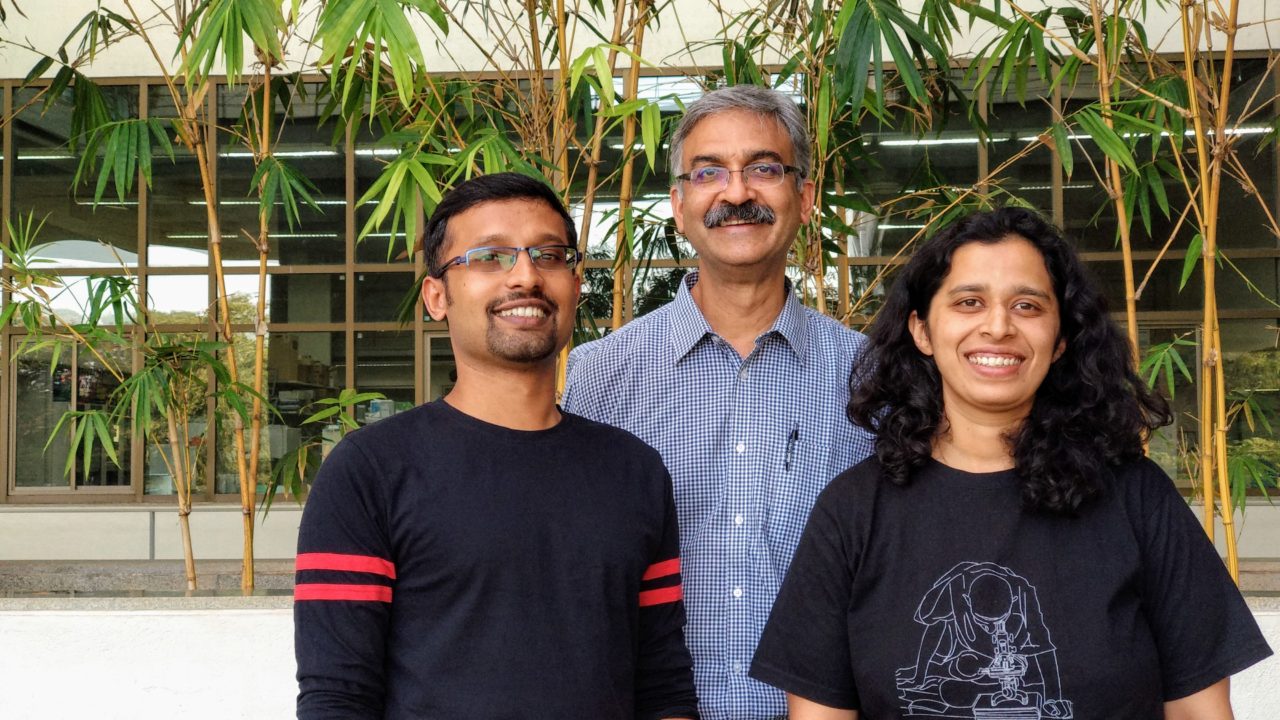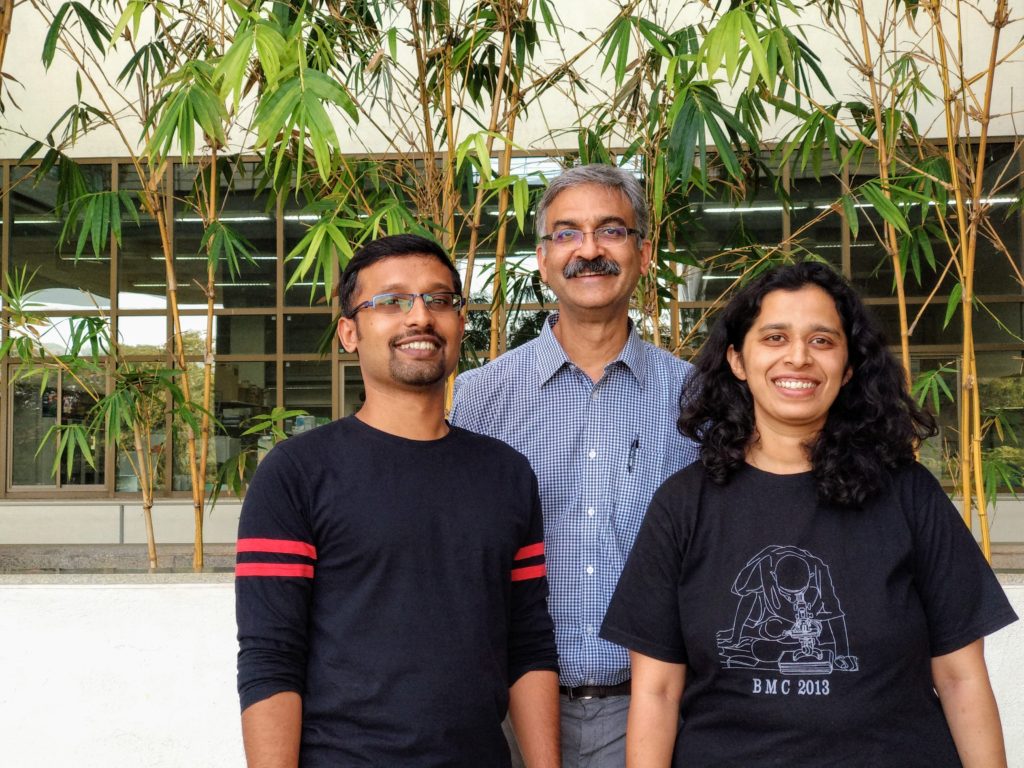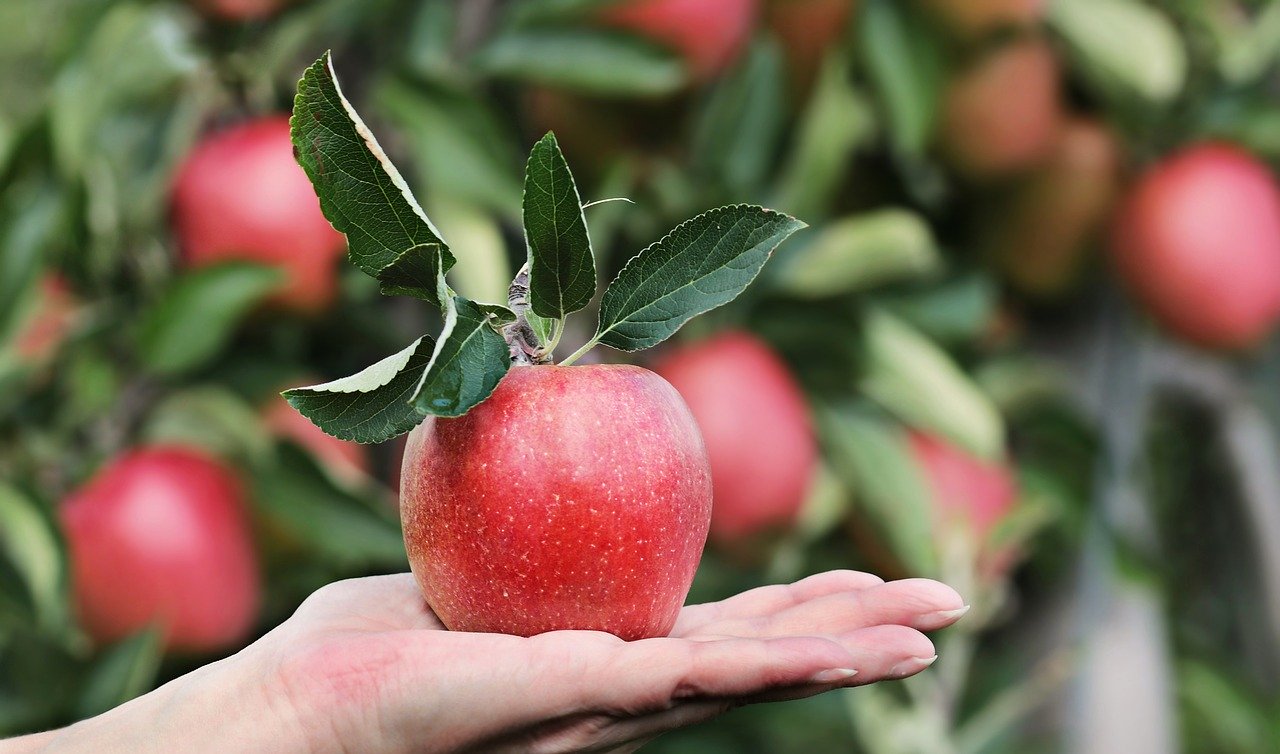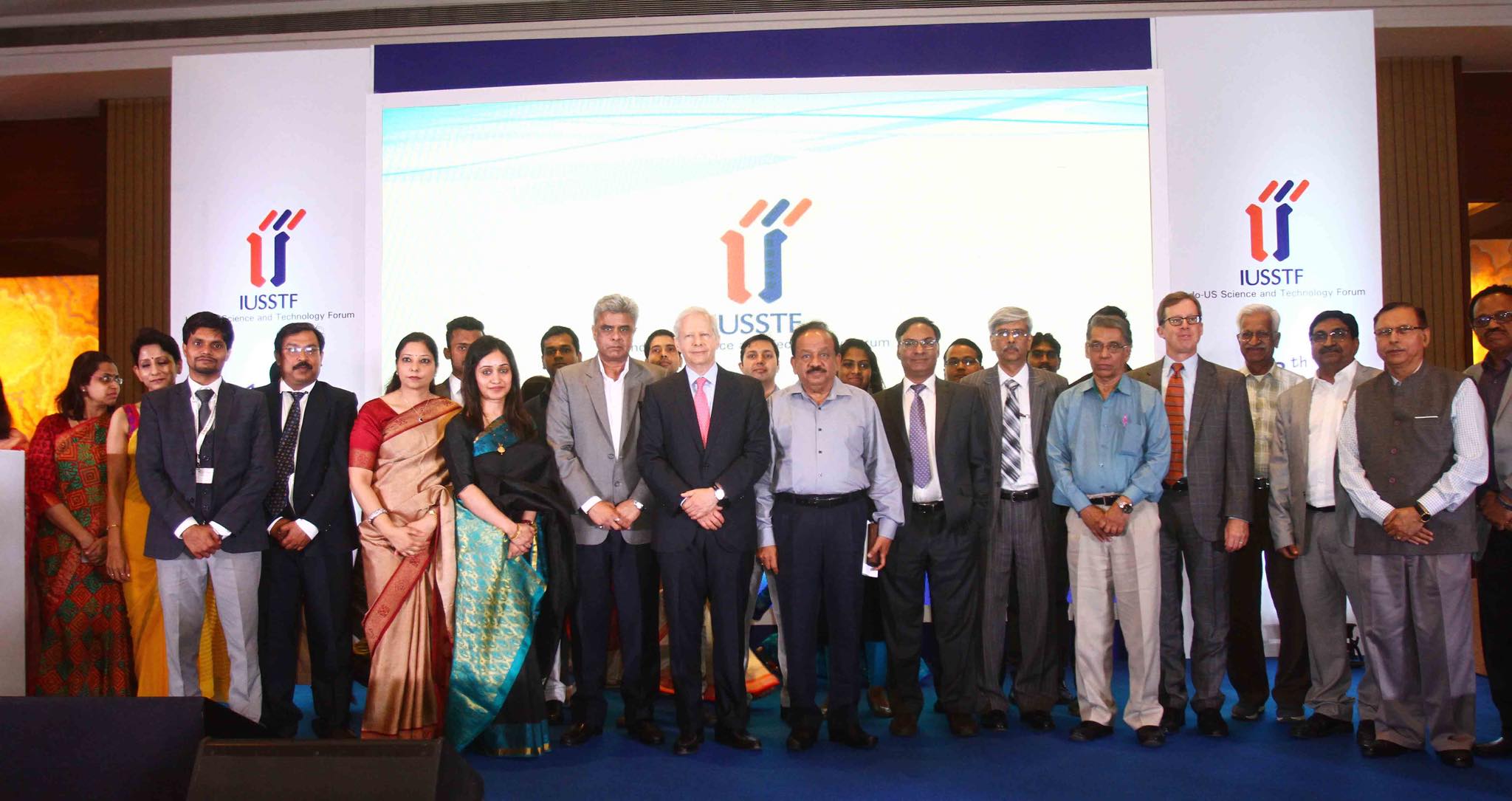
Balancing Act at The Edge of Cells
- News
- 2.2K
We are made up of trillions of cells and they use endocytosis to take up nutrients and growth factors. Endocytosis is a process by which a cell makes small vesicles or bags to take in nutrients from the outside environment. In order to maintain its shape and size, a cell has to maintain the area of its plasma membrane.

Endocytosis decreases the plasma membrane area while the reverse process, exocytosis adds it. A cell needs to balance the two to maintain homeostasis. Imagine removing the membrane bit by bit using endocytosis, the cell will end up shrinking. This means the cell membrane will tense up slowly as the rate of endocytosis is increased. To relieve this tension, the cell needs to lower its endocytosis or increase its exocytosis.
Thus, apart from taking nutrients, endocytosis helps in maintaining the shape and size of the cell.
Now, Prof. Satyajit Mayor’s team has shown how cells regulate this membrane tension using a novel endocytic pathway called the CLIC/GEEC or CG pathway. The study done by lead author Joseph Jose Thottacherry shows that the CG endocytosis is intimately connected to membrane tension by sensing and responding to changes in membrane tension.
“We have shown that increase in endocytosis increases the membrane tension. When we perturb the pathway to decrease endocytosis it decreases the tension. Thus, addition and removal of membrane directly influence the tension of membrane” said Joseph Jose Thottacherry. The results of this study were published in the journal Nature Communications.
Traditionally, endocytosis requires a coat protein to bend the membrane that forms a cage-like structure, and another protein to cut the vesicle. However, the CG pathway, unlike the traditional pathway, works without the coat raising the question, how would a cell bend its membrane for making vesicles?
This was worked out in another published report in Nature Communications from Prof. Mayor’s lab by lead authors Mugdha Sathe & Gayatri Muthukrishnan. They found that in the absence of a coat, the cell uses membrane curvature sensing proteins that recognize convex and concave kind of curvatures. They find two proteins called PICK1 (convex) and IRSp53 (concave) that help in vesicle formation by bending the membrane.
Prof. Mayor said, “Our study suggests each cell senses the force and regulates the CLIC/GEEC pathway to maintain membrane homeostasis. If the force goes higher, the CLIC/GEEC pathway is shut down helping the membrane relax while if tension goes lower, endocytosis increases and an extra membrane is taken in.”
So what is this CLIC/GEEC pathway important for? Earlier studies have shown that many viruses use this pathway to enter the cells. This pathway is also involved in fruit fly wing development and cell migration. Now, it has been shown that it can help with plasma membrane homeostasis.
Since this pathway is involved in cell migration, it can be involved in spreading of cancer cells to different organs during metastasis or immune cells chasing pathogens. Thus, these two studies are promising and show the importance of understanding non-traditional pathways for their potential translational value.
This study was carried out at National Centre of Biological Sciences (NCBS), Bengaluru. The work was funded by Wellcome Trust-DBT India Alliance and Dept. of Science and Technology (DST), Govt. of India. (SCISOUP)
By Ratneshwar Thakur
If you liked this article, then please subscribe to our YouTube Channel for the latest Science & Tech news. You can also find us on Twitter & Facebook.


